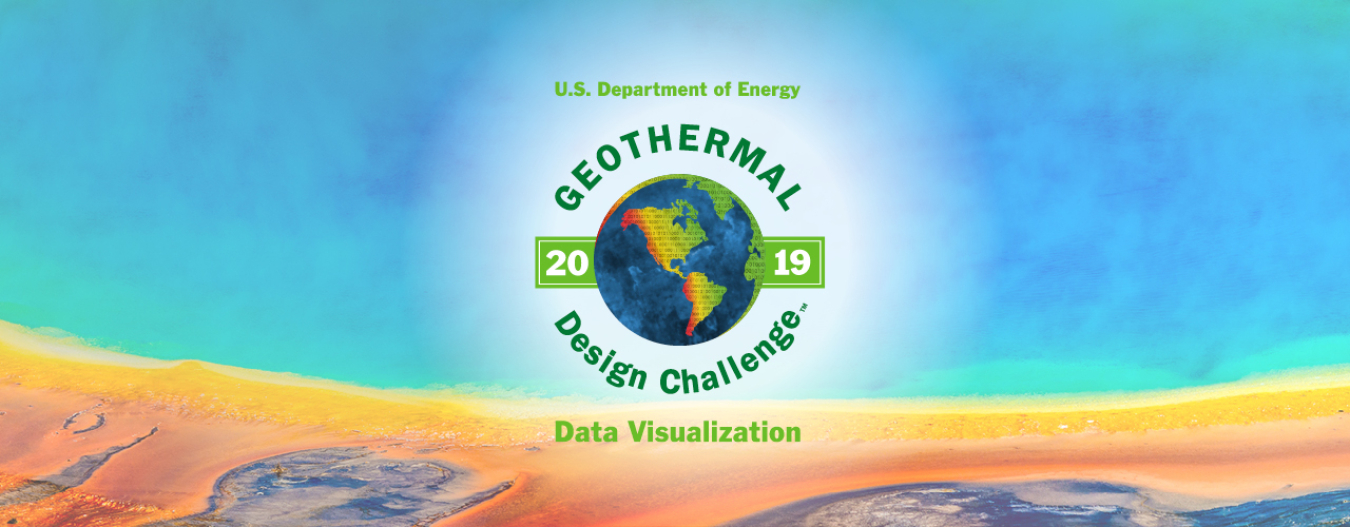The U.S. Department of Energy’s Geothermal Technologies Office (GTO) is excited to announce the winners of the 2019 Geothermal Student Competition!
Office of Critical Minerals and Energy Innovation
April 30, 2019
The U.S. Department of Energy’s Geothermal Technologies Office (GTO) is excited to announce the winners of the 2019 Geothermal Student Competition!
Back in January, GTO invited teams from universities and high schools from around the country to put their data visualization skills to use and help tackle real-world problems. Over the past three months, teams have been analyzing recently acquired, cutting-edge data collected from deep below the Earth’s surface at the Frontier Observatory for Research in Geothermal Energy (FORGE) site in Milford, Utah. These student teams were then asked to submit portfolios consisting of 5-10 compelling data visualizations that could aid in the selection of the next well location at FORGE – GTO’s flagship initiative that serves as an underground laboratory where subsurface scientists can test new enhanced geothermal systems (EGS) technologies.
Earlier this month, the competition closed with an impressive 15 submissions! After much deliberation and careful review of all submissions, GTO has selected three winning teams.
First Place: DePaul University/Georgia Institute of Technology
Submission: “EGS Site Selection Using GIS and Machine Learning”
Prize: $5,000
The winning team, comprised of data science students with backgrounds in geographic information system (GIS), submitted data visualizations targeting an audience unfamiliar with EGS and machine learning. Their final portfolio suitability map and proposed well location was well designed, and based upon robust analyses using Python and ESRI's ArcMap, ArcScene and strong understanding of the FORGE data. More info on their submission.
Second Place: Colorado School of Mines
Submission: “Open-Source Approach to 3D Communication”
Prize: $3,500
The runner-up team created a suite of open-source Python packages, enabling available datasets to be incrementally integrated into a 3D scene. Tools used include The Open Mining Format, ParaView, SGeMS, and SimPEG, along with additional tools made by the team itself. 3D visualizations such as this submission could enable researchers and scientists to rapidly explore data, communicate findings, and facilitate the reproducibility of results. More info on their submission.
Third Place: Stanford University
Submission: “Want to Explore FORGE Data?
Prize: $2,500
The Stanford team’s submission is geared toward an audience with little knowledge of geothermal, and therefore lays out the basic concepts of geothermal exploration and well siting using lithology and subsurface temperatures. The visualization portfolio was created in Tableau, and can be easily integrated into a classroom curriculum. More info on their submission.
Through FORGE, the geothermal community hopes to unlock the key to a nearly endless renewable geothermal resource and become a world leader in geothermal energy. A major key to FORGE success is locating wells for optimal energy extraction, and GTO believes students – armed with fresh eyes and outside-the-box ideas – can meaningfully contribute to this critical decision. In the coming months, the winning teams will have the opportunity to work with the FORGE team on their proposals and discuss ways to carry out their plans.
Stay tuned for future developments on this educational partnership. GTO hopes to inspire a new generation of geothermal scientists and stakeholders, and revolutionize our domestic energy portfolio with the expansion of enhanced geothermal energy.
Congratulations to the winners and thank you to all the students for their tremendous creativity and hard work!

